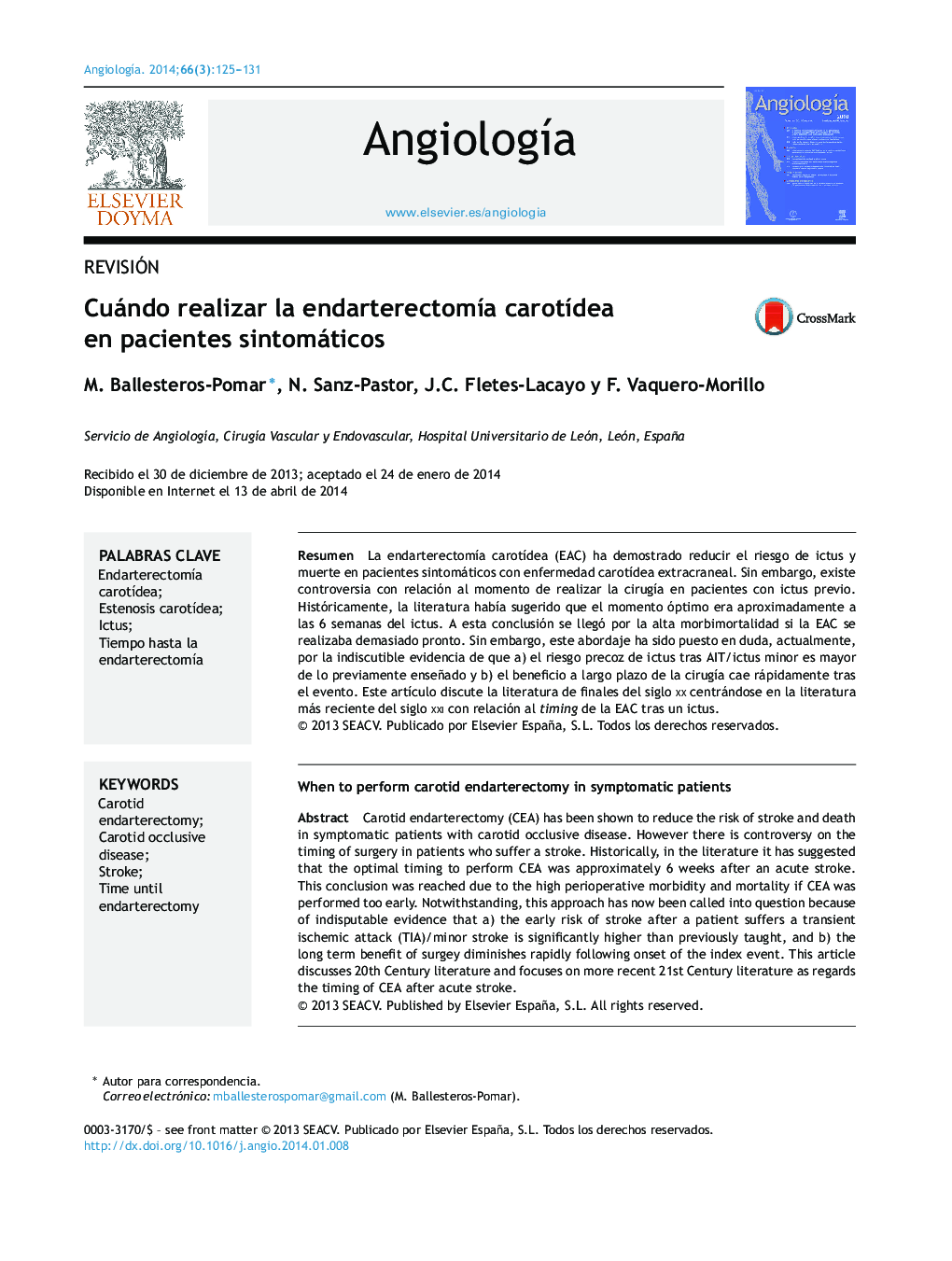| کد مقاله | کد نشریه | سال انتشار | مقاله انگلیسی | نسخه تمام متن |
|---|---|---|---|---|
| 2867542 | 1171093 | 2014 | 7 صفحه PDF | دانلود رایگان |
ResumenLa endarterectomía carotídea (EAC) ha demostrado reducir el riesgo de ictus y muerte en pacientes sintomáticos con enfermedad carotídea extracraneal. Sin embargo, existe controversia con relación al momento de realizar la cirugía en pacientes con ictus previo. Históricamente, la literatura había sugerido que el momento óptimo era aproximadamente a las 6 semanas del ictus. A esta conclusión se llegó por la alta morbimortalidad si la EAC se realizaba demasiado pronto. Sin embargo, este abordaje ha sido puesto en duda, actualmente, por la indiscutible evidencia de que a) el riesgo precoz de ictus tras AIT/ictus minor es mayor de lo previamente enseñado y b) el beneficio a largo plazo de la cirugía cae rápidamente tras el evento. Este artículo discute la literatura de finales del siglo xx centrándose en la literatura más reciente del siglo xxi con relación al timing de la EAC tras un ictus.
Carotid endarterectomy (CEA) has been shown to reduce the risk of stroke and death in symptomatic patients with carotid occlusive disease. However there is controversy on the timing of surgery in patients who suffer a stroke. Historically, in the literature it has suggested that the optimal timing to perform CEA was approximately 6 weeks after an acute stroke. This conclusion was reached due to the high perioperative morbidity and mortality if CEA was performed too early. Notwithstanding, this approach has now been called into question because of indisputable evidence that a) the early risk of stroke after a patient suffers a transient ischemic attack (TIA)/minor stroke is significantly higher than previously taught, and b) the long term benefit of surgey diminishes rapidly following onset of the index event. This article discusses 20th Century literature and focuses on more recent 21st Century literature as regards the timing of CEA after acute stroke.
Journal: Angiología - Volume 66, Issue 3, May–June 2014, Pages 125–131
